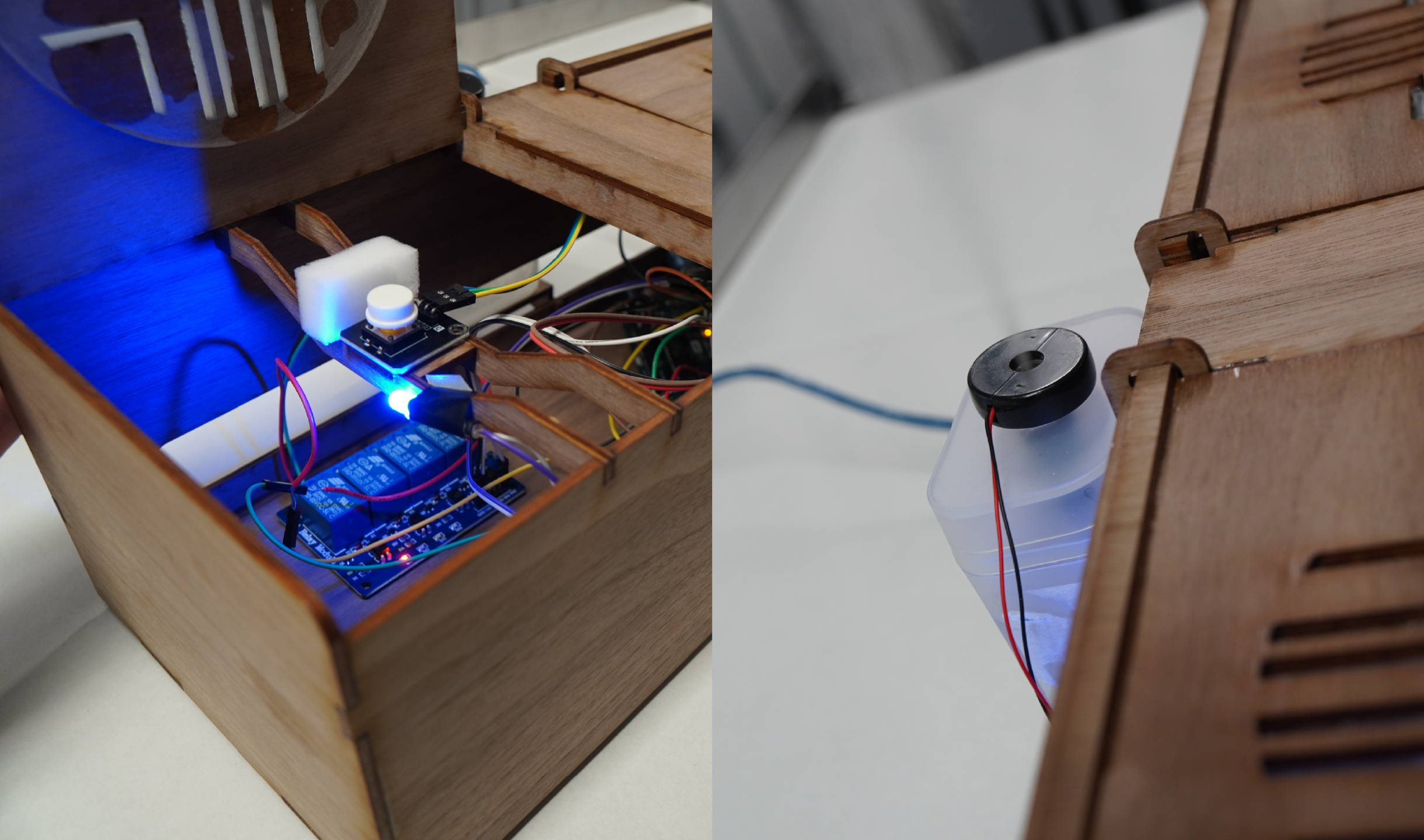Using informal learning as a framework, this project builds an interactive installation that invites visitors to engage with cultural artifacts through senses and storytelling with the goal of making educating the cultural context of artfacts more accessible for visitors with diverse backgrounds.
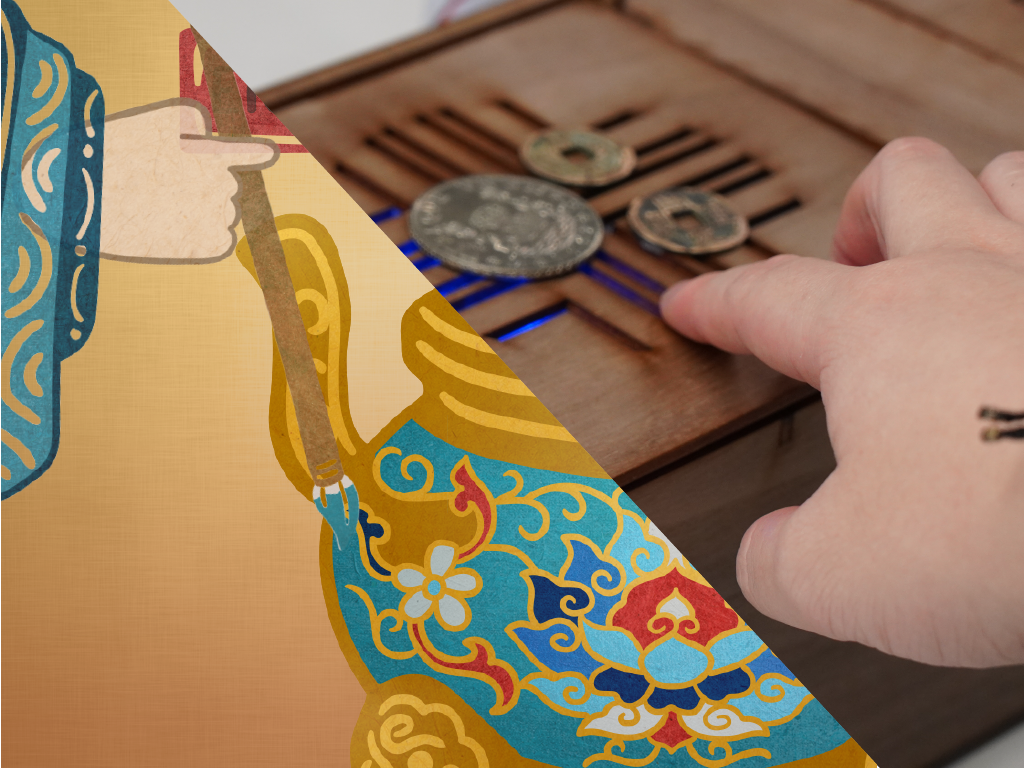
This project explores how informal learning strategies combined with digital multisensory technologies can reshape the presentation of cultural artifacts in museums. It addresses the challenge that traditional museum displays as a form of formal learning often fail to effectively convey the cultural contexts behind artifacts, especially to younger visitors with diverse backgrounds and leisure-driven motivations.
Through secondary research on educational models and interactive technologies, and primary research including expert interviews, user observations, and on-site visitor studies, the project identified the potential of a different learning model, informal learning, in musuem of combining storytelling and multisensory experience to support self-driven cultural learning.
The final solution is an interactive installation focused on Chinese cloisonné enamel. By touching physical objects, visitors trigger short, animated fictional stories inspired by real historical contexts, enhanced with scents released at key moments. This multisensory, self-paced experience immerses visitors in the cultural background behind the artifacts without relying on dense textual information.
Ultimately, the project proposes a new curatorial approach for universal museums, aiming to create more engaging, accessible, and emotionally resonant cultural education experiences that better bridge the gap between artifacts and their deeper cultural meanings for visitors with diverse backgrounds.

Traditional museum displays often focus on the physical artifact itself, using minimalist layouts and dense wall texts as the primary means of communication. These object-centered, text-heavy presentations tend to separate artifacts from their cultural, emotional, and sensory contexts. As a result, visitors are expected to decode cultural meaning through passive observation, leading to disengagement—especially among those without prior knowledge of the culture.
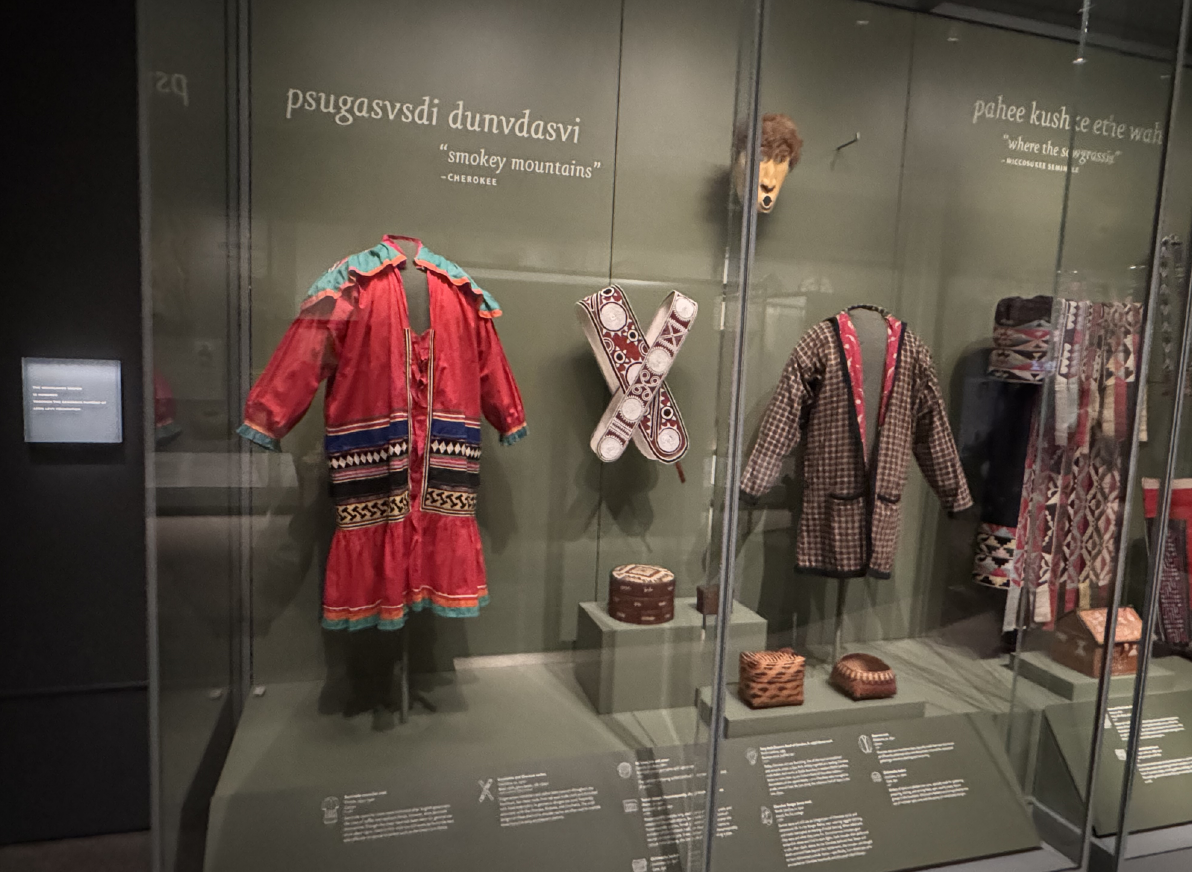
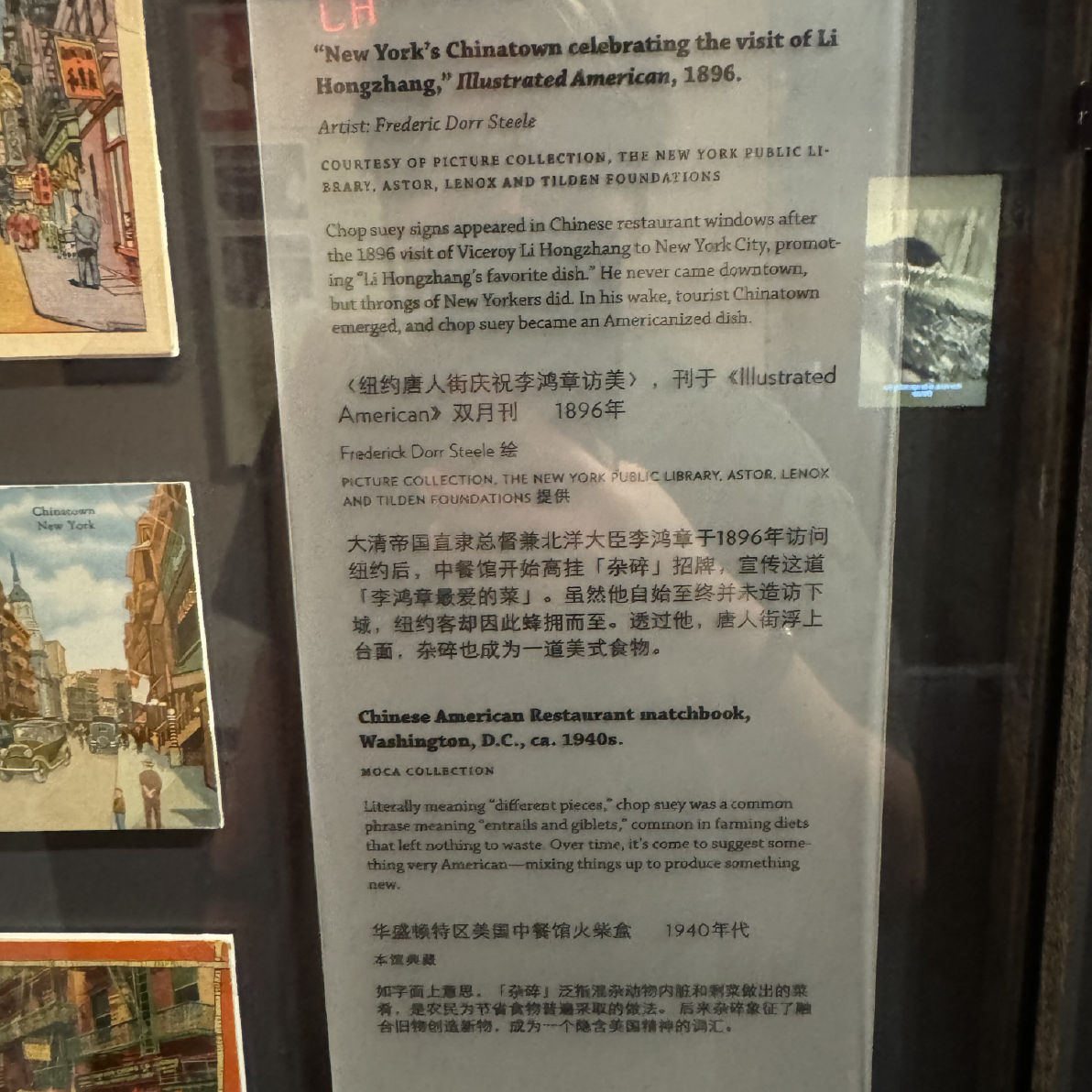
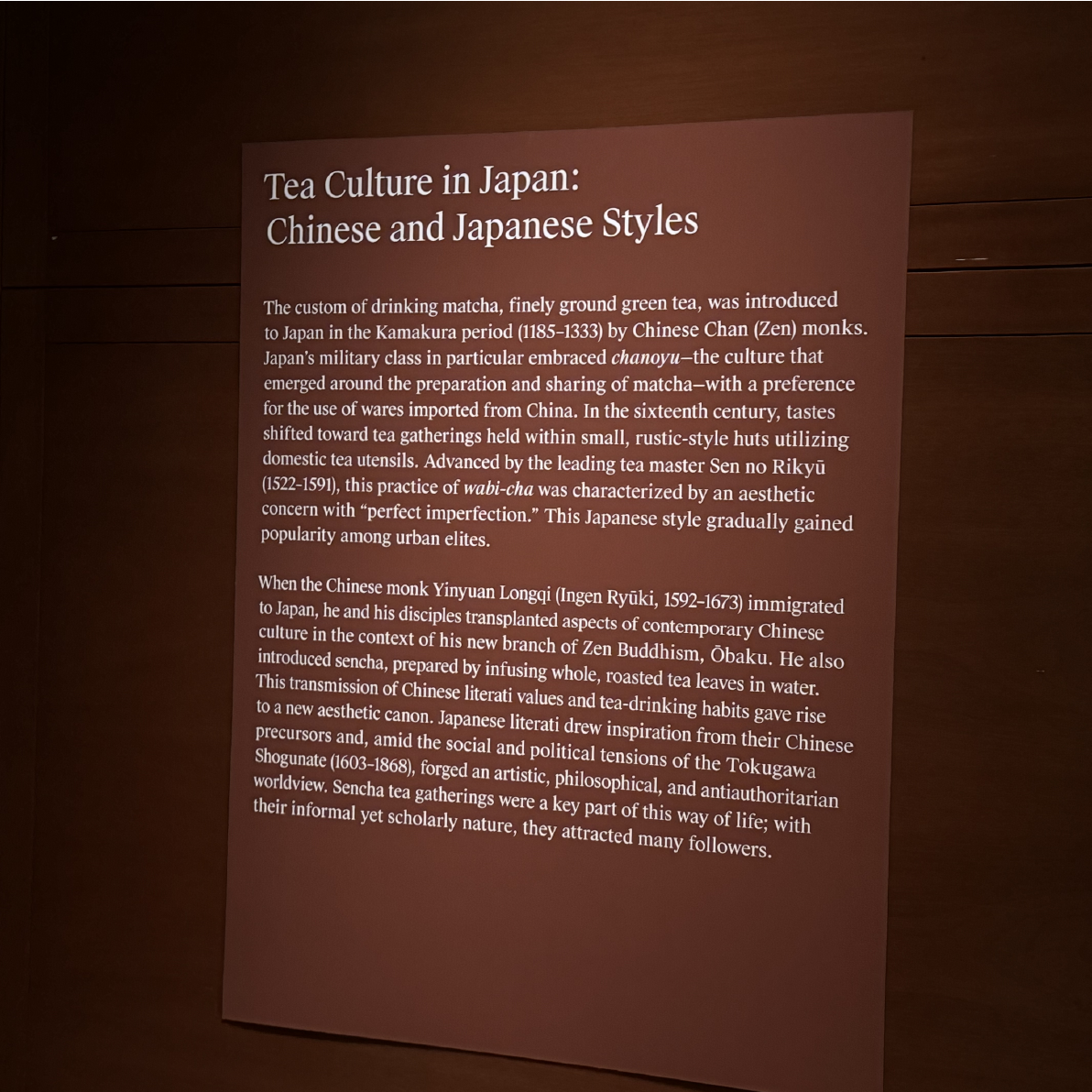
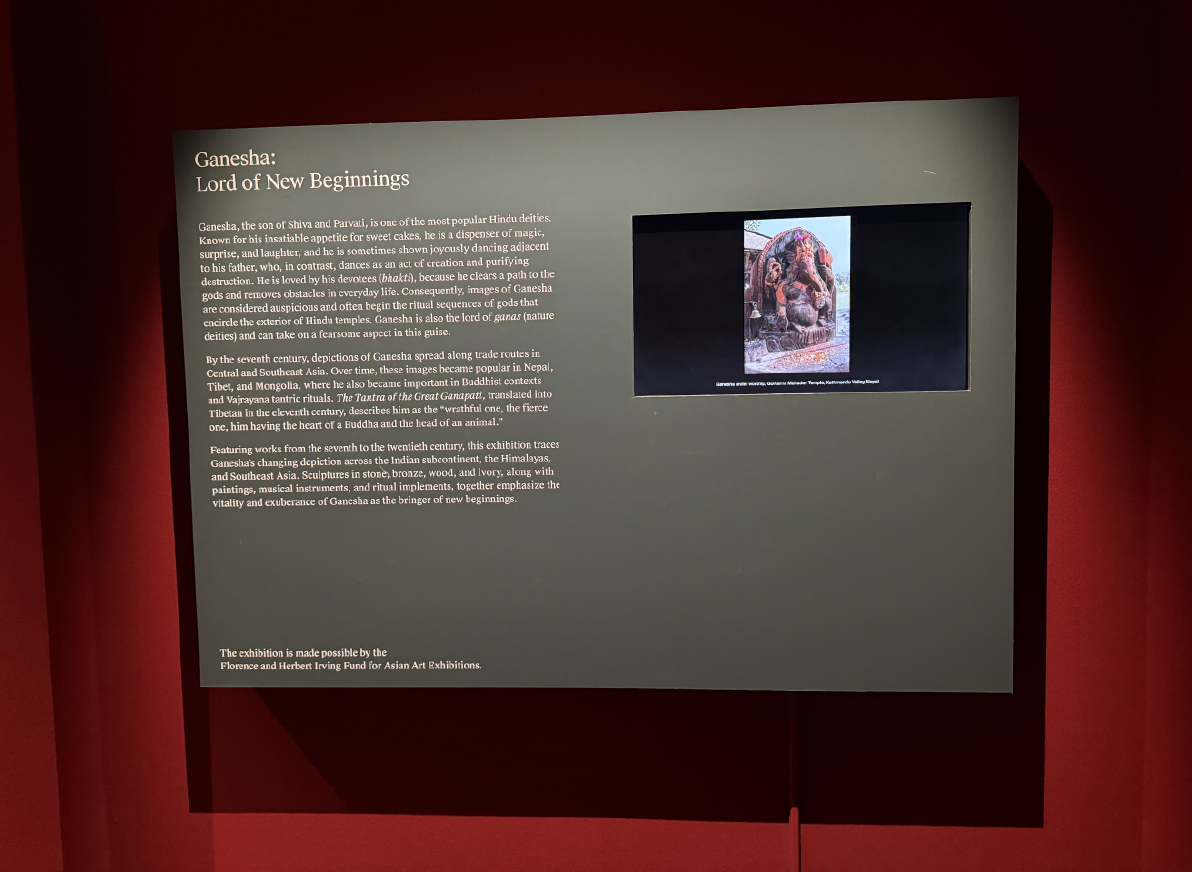
In the context of museum visits, formal learning—structured and lecture-based—is often misaligned with visitors’ leisure-driven motivations. This project adopts informal learning instead, which encourages self-paced, interest-driven exploration through sensory and emotional engagement. It offers a more accessible and memorable way to connect visitors with the cultural context behind artifacts.
The installation consists of a visual storytelling component and a physical interface. The visual storytelling component is a projector displays an animated story onto a cloth-textured screen. The physical interface inlcudes touchable objects embedded in the tabletop trigger different chapters of the story and a scent emitter integrated into the system that release synchronized scents during key moments of the story.
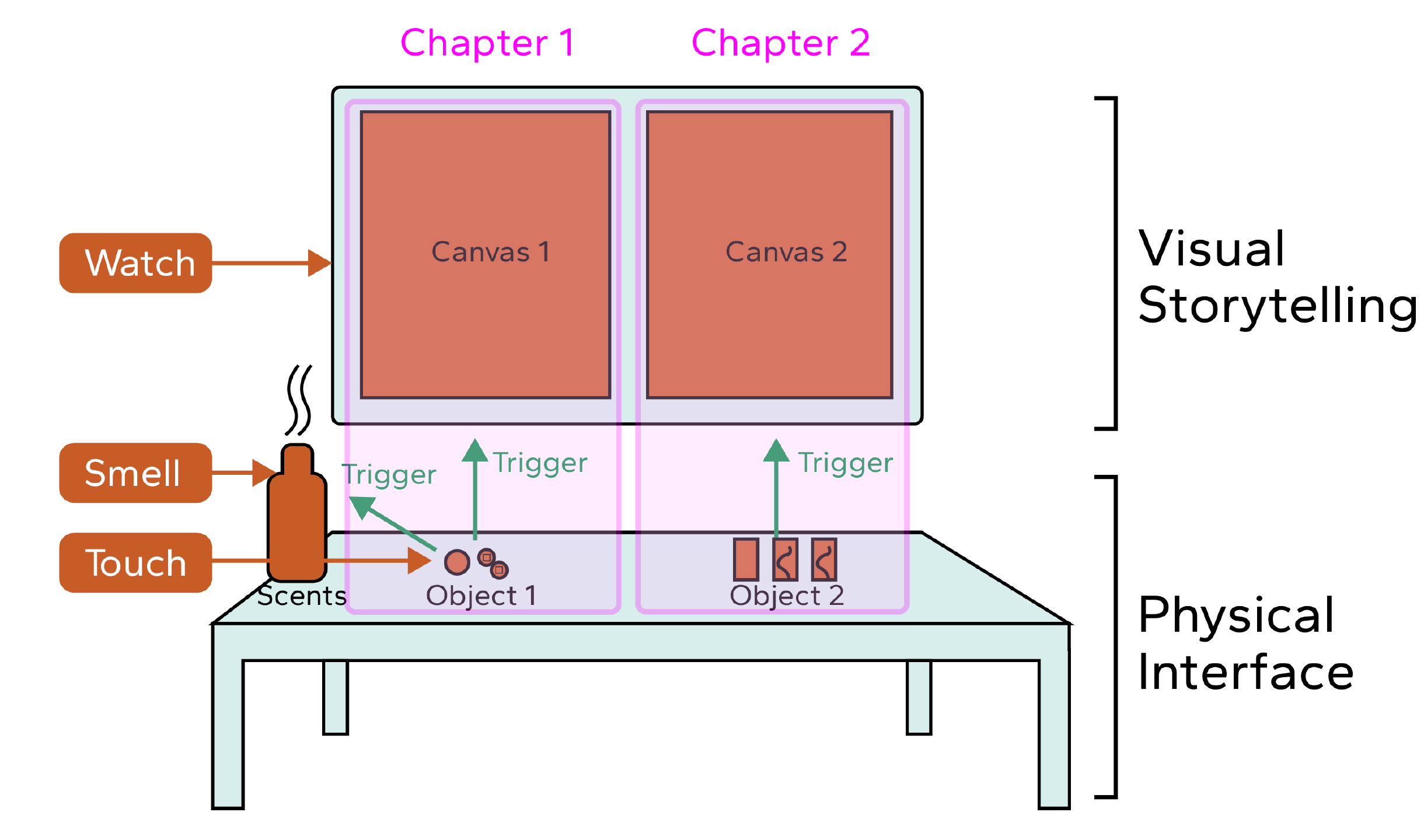
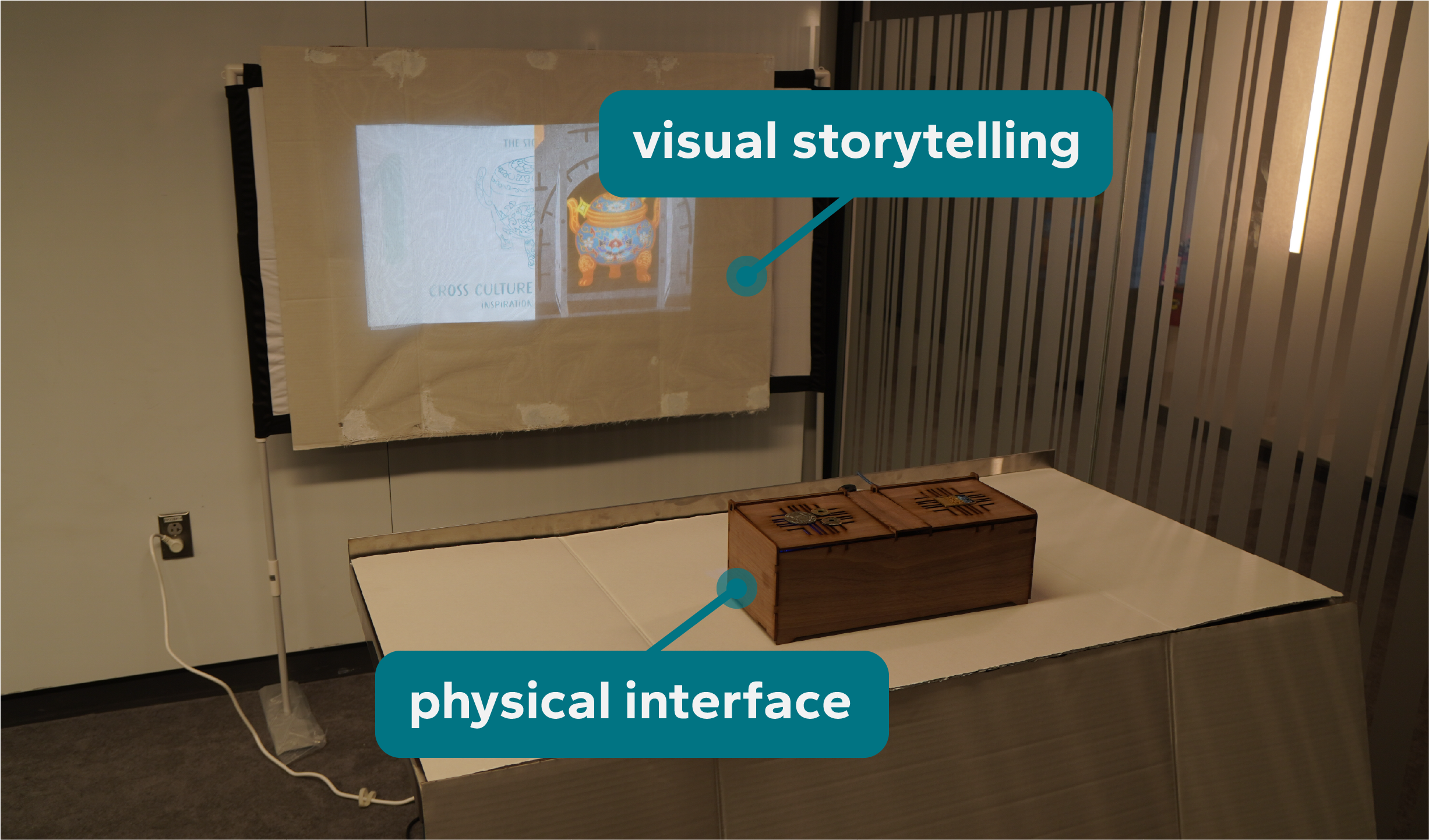
To make cultural insights more relatable and memorable, this project transforms selected historical knowledge into a fictional narrative centered on a single character. The storyline is built from real cultural themes—such as craftsmanship, trade, and imperial control—extracted from artifact research and historical records. These insights are then reimagined through character-driven scenes, allowing visitors to engage with cultural context emotionally and intuitively through story.
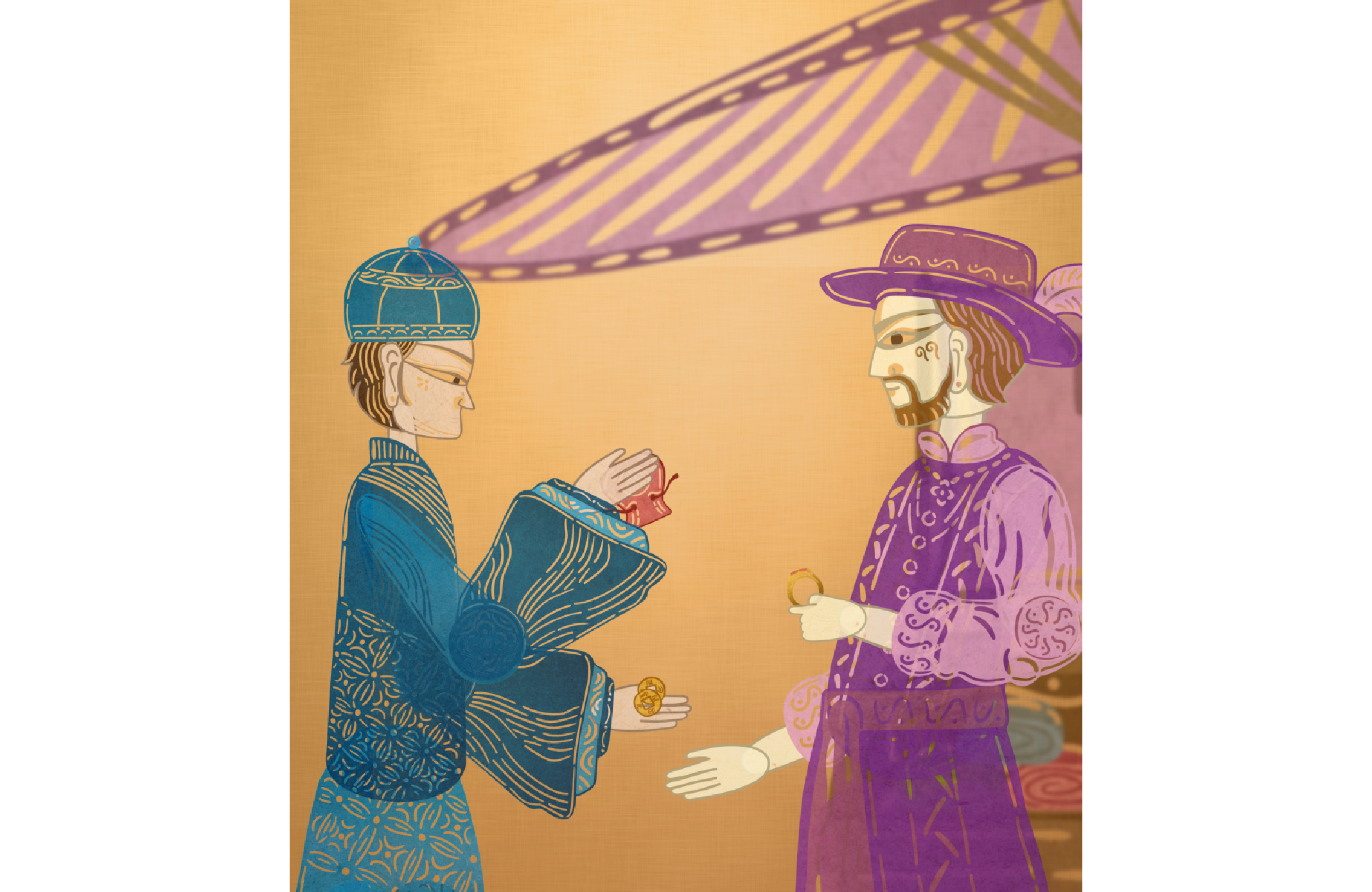
The visual style draws inspiration from traditional Chinese shadow puppetry, chosen for its historical relevance and ability to support stylized, symbolic storytelling. Character and scene designs are developed based on historical paintings, photographs, and records, then adapted into shadow puppet-inspired forms using repeating patterns and paper-like textures.
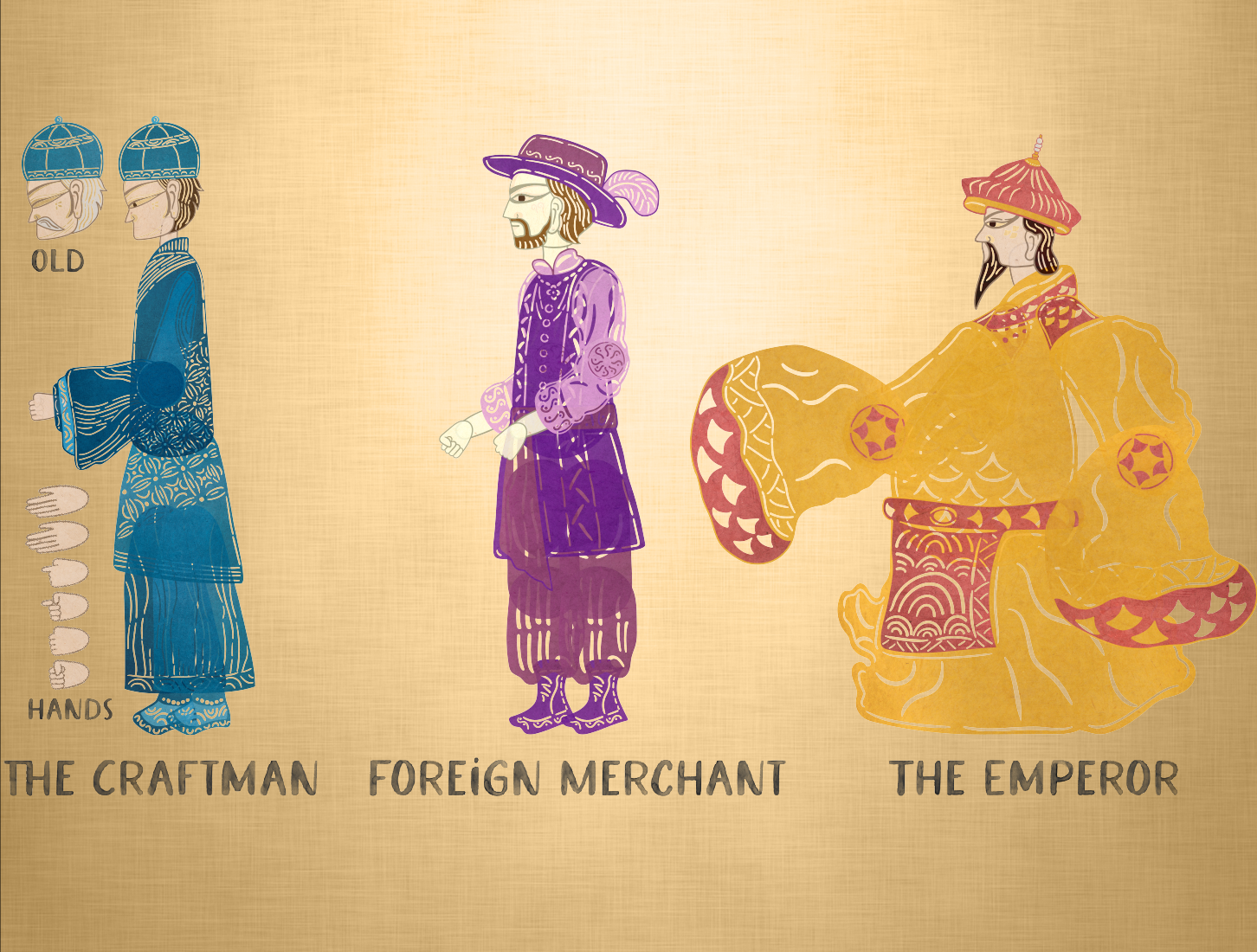
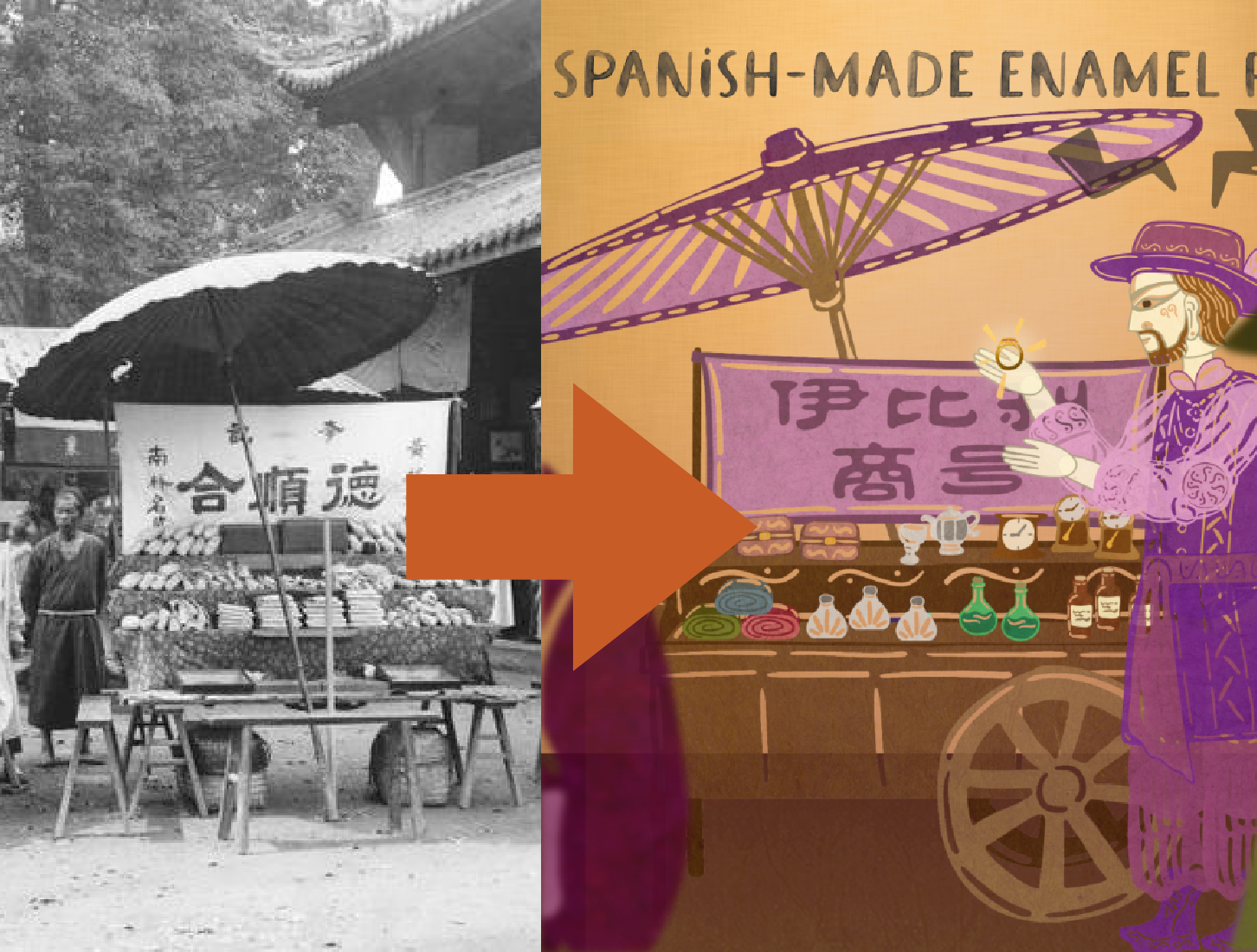

The touchable objects are designed as physical triggers for each chapter of the story and are directly linked to key elements within the narrative. One replicates historical coins featured in the chapter about cross-cultural trade, while the other consists of textured samples representing different stages of cloisonné enamel production. These objects are crafted to offer not only interactive functionality but also tangible connections to the artifact's cultural context.
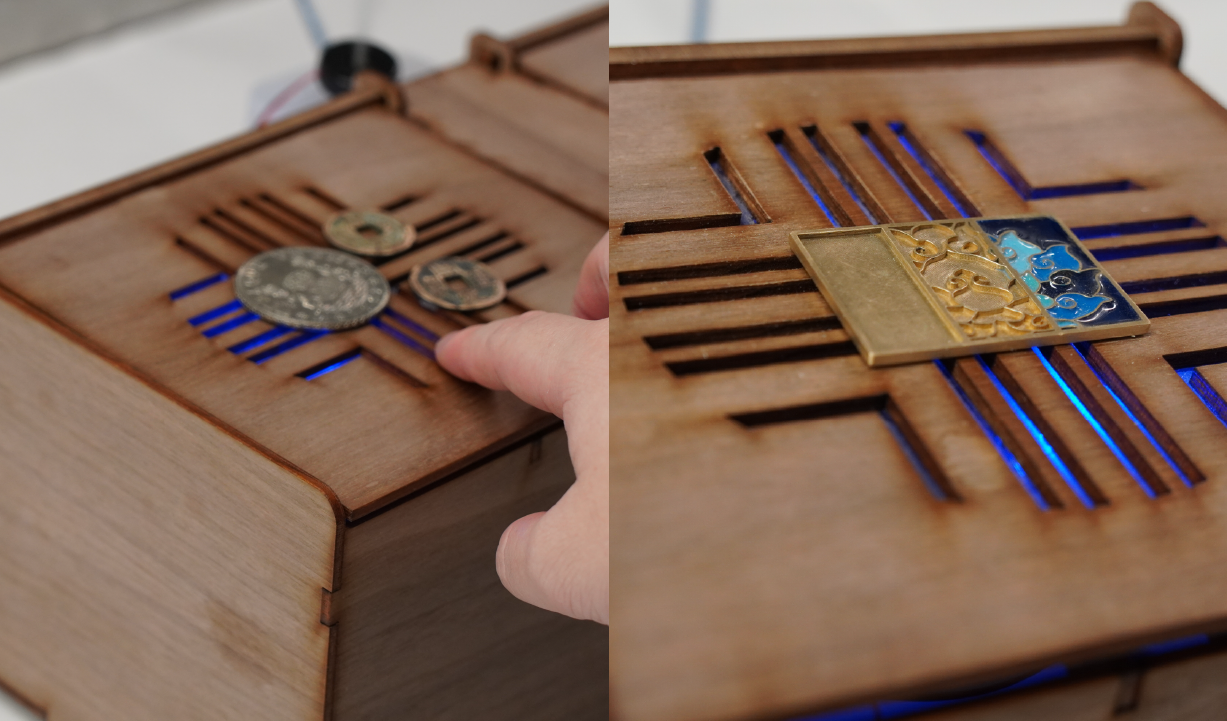
Each touchable object is mounted above a concealed button mechanism that detects user interaction through physical pressure. When pressed, the system triggers a corresponding animated chapter via P5.js
The scent component uses a piezoelectric misting module, controlled by an Arduino and relay circuit, to release fragrance quickly and quietly.
This setup ensures reliable interaction and seamless integration of multisensory feedback within a museum environment.
